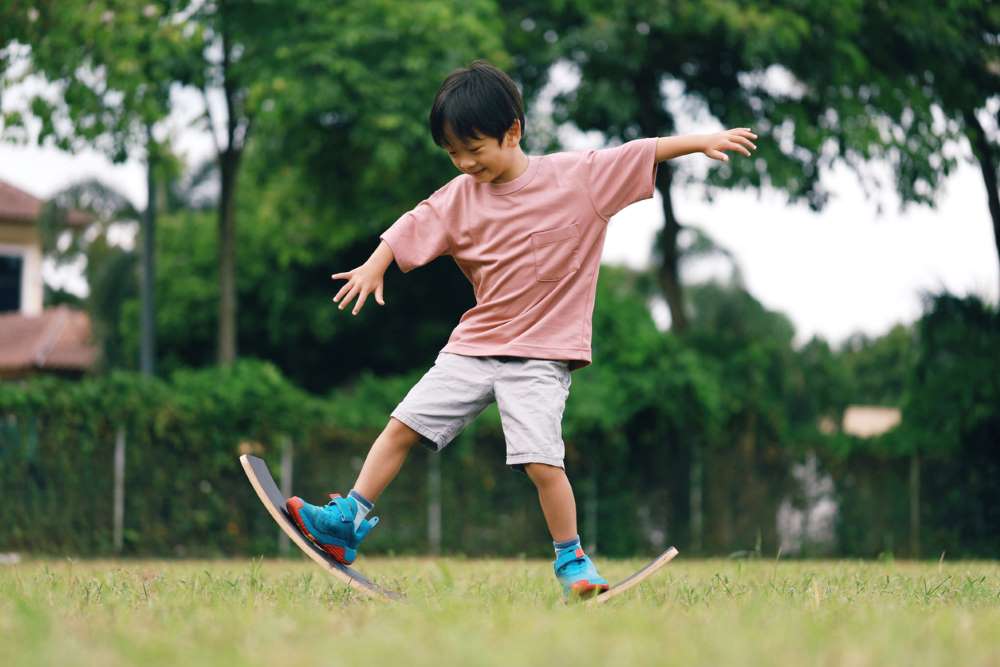
Wobble boards, or Montessori boards, are two other names for balance boards. They are Montessori toys developed for children's imaginative play and discovery. It teaches children about balance and movement to strengthen their posture, build core strength, etc.
What Is A Balance Board?
Balancing boards are made of hardwood boards that are often curved in shape. They may be kept as is or altered with various colors and designs to let you personalize your board.
They're wonderful to use as exercise routine equipment and an excellent method for kids to burn excess energy. Using a balancing board has several physical advantages. A balancing board has even been demonstrated in certain trials to help avoid ankle sprains and other injuries since children learn how to balance themselves in the future.
A balance board helps one learn how to balance one's body. Kids may improve their balance and learn how to use the Montessori boards by playing with them when youngsters learn about and acquire the balancing ability for the future. They will learn how to balance themselves when walking, participate in different sports, learn how to ride a bike, and so on.
How To Use A Balance Board?
This little, round board for toddlers and kids is constructed of solid hardwood and may have an anti-skid cushion for a tight hold. These boards can handle up to 300 pounds and rotate 360 degrees. Such a construction makes them ideal for balancing skills and improving physical shape and strength.
Children may rock on the board by standing up, positioning their feet on opposite sides, and moving in different directions. It's also useful for kids who can't stand up yet since they can crawl on all fours and rock the board. Thus, it makes using the board fun while also learning not to fall off the toy.
How To Choose A Balance Board For Children?
There are a few factors to consider when choosing a board. Most of them have information on the age, but other things should be considered. These factors include the following:
-
Material.
-
Size.
-
Curve.
-
Plain or painted.
Now, let's delve into the details of each parameter.
Material
The material of the balancing board determines its strength and longevity. It also influences how the toy looks, feels, and responds to movement. The best boards are made of all-natural hardwood and should be durable enough to withstand extensive indoor and outdoor use. Hardwood balancing boards are well-known for their strength and longevity. Synthetic boards may be less environmentally friendly and may not last as long. However, they are more affordable. Thus, consider your budget and remember that toys for kids made of plastic aren't toxic since toy developers must follow strict rules.
Size
Balance boards are available in two sizes for younger and larger children. A larger size is preferable, so the kid can utilize it and grow into it.
Curve
The size and the curve of these toys vary. A board large enough for your child to utilize and curved enough for comfortable rocking is ideal. Consider visiting the store with your child and asking if it's possible to do some testing to see if the toy fits. If not, opt for the age range.
Remember: if the board is not sufficiently curved, it will be too stable for your youngster to learn to balance. If it's overly curved, the board will rock too much and won't be usable for other purposes.
Plain Or Painted
A balancing board should be painted or sealed to prevent scratches from the material. Some may have an anti-slip traction pad on top. Boards with a grip pad are simpler to balance on and safer for children. Smooth boards are more difficult to balance but also more adaptable. They may also benefit development because they are more difficult to utilize.



























